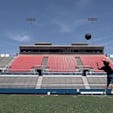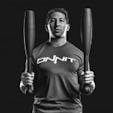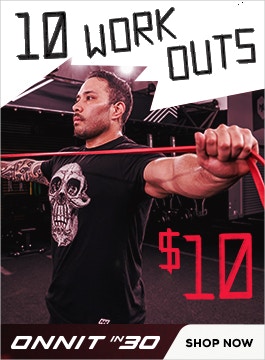
You should also have the ability to climb, crawl, sprint, and jump. These are primal movements. Obviously there are hundreds, if not thousands of different variations for each of the basic bodyweight training movements out there, but no matter what, all of them come back to being able to perform the basics
Walk into the Onnit Academy on any given day and you’re bound to meet a cast of characters that rival those from the cantina scene in Star Wars (yes, the one where you meet Han Solo for the first time).
We have trainers who swing steel maces and clubs like light sabers, elite Muay Thai and jiu-jitsu coaches, beautiful bikini contest competitors, and a trainer who’s so jacked no shirt can hold him—but enough about Eric Leija.
The Onnit Academy brings together the best fitness experts from all over the galaxy, and if you can’t be here to learn from them in person, using this website is the next best thing.
So, in an effort to help you become better acquainted with our Academy Master trainers and the unique skills they offer, we’re going to introduce you to them one at a time.
We’re starting right at the top, with Onnit’s Chief Fitness Officer John Wolf. A veteran of functional, unconventional training who learned from legends such as Pavel Tsatsouline and Scott Sonnon, Wolf oversees training at the Academy and has been instrumental in designing its certifications. He lectures around the world and has worked with celebrities and elite athletes such as comedian Joe Rogan, UFC fighter Carlos Condit, and NHL star Duncan Keith. At 38, he can still deadlift 500 pounds on a moment’s notice, move like Spider-Man, and perform explosive pushups on the back of his wrists.
Onnit entered Wolf’s lair for the following chat¦
John Wolf
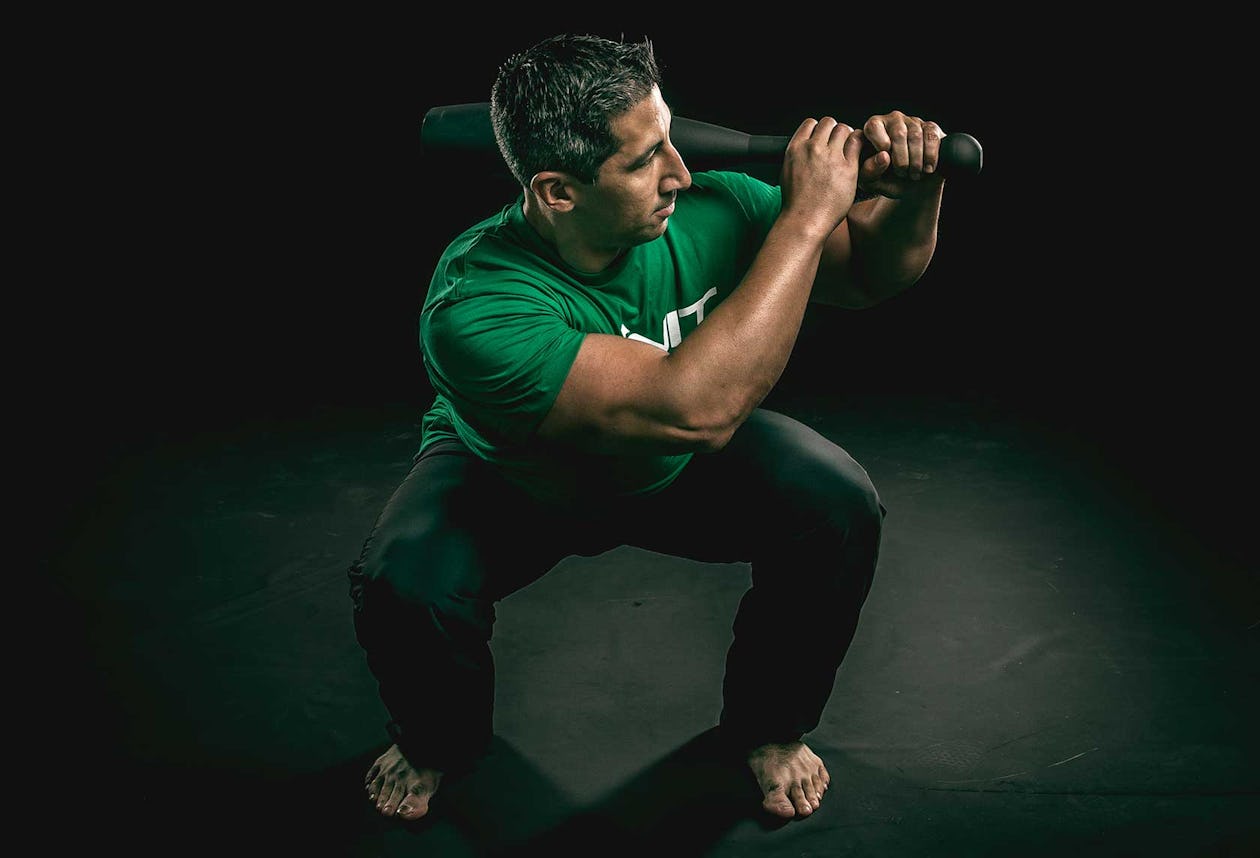
Age: 38
Hometown: Monterey, CA
Height: 5’8”
Weight: 205 pounds
Girth: “approximately the same as a 200 year-old oak tree”
Fun fact: “I snore like a bear”
Onnit: When did you first become interested in fitness?
Wolf: When I was four years old I got started in martial arts, and that created a base for physical activity in my life. I’ve never taken it for granted. Thanks to fitness, I’ve always been able to keep up with the jocks, lift heavy with strength athletes, and really do anything physical that I had to do. I attribute it to this hard physical practice when I was really young. It altered the way I developed.
What style did you train in?
It was a mix of boxing, judo, jiu-jitsu, and karate. My instructor was ahead of his time. It wasn’t MMA per se, as we know the sport of MMA now, but it was a mix of styles. I was four years old doing striking and grappling.
I would get in trouble at tournaments because, the way I learned, if you’re not winning at striking, you change strategies. If you’re not winning at grappling, you strike. But tournaments were always one style. So when I threw someone on their head in a karate tournament, or punched somebody in a judo tournament, they didn’t like that [laughs].
Why did you seek out martial arts at such a young age? As opposed to the more conventional sports most kids try.
By nature, I am non-confrontational. But I grew up in a rough neighborhood—a lot of drugs and violence. I got some new toys one time, and then my dad noticed I came home from playing in the neighborhood and I didn’t have my new toys anymore.
He grew up mixed ethnicity in the 60s. You had your black neighborhoods and white neighborhoods, and he was a white and Japanese kid, so no matter where he walked, he had to fight. I didn’t look like anyone in my neighborhood growing up either, being a brown kid with Asian eyes. Being different meant having to fight to keep what was yours, based on my dad’s experience, and he demanded I come back with my belongings or get my ass whooped trying. So off to karate I went.
It’s hard to believe looking at you now, but you weren’t always a healthy, fit guy.
Not at all. After high school, I just partied. I didn’t get into a diligent physical practice again for years. I started smoking weed my last year of high school and found out I had a knack for procurement.
Let’s just say that I spend many years after graduation making sure the party favors were flowing. There were many times in these years that I found myself in very risky situations with authorities as well as on the streets. In retrospect, I could have certainly made some better choices back then but I learned a lot about myself, a lot about people in general, and was able to put myself through school.
“You know how when you’re young you have these benchmarks you want to achieve—like having kids and buying a house? I was nowhere close to those things so I was depressed, just walking through life.”
You were so disciplined and responsible growing up. Why do you think you made the sudden turn to drugs?
My mom was a single mother at times and my little brother is developmentally disabled, so it was my job to help raise my younger siblings. Playing the big brother is a role I seem to continue to play in life, and revel in as well.
So up till that point I was raising kids and as goodie-goodie as could be. Maybe I was rebelling against that role. And I was always angry because my dad and mom had split. I just decided I had to explore the edges of my persona. I always had a foot in a lot of different worlds at once. I would study with nerds, play sports with jocks, and hang out with thugs. I walked every social line.
I went to college for a business degree but when I found meth I lost it. I got fired for falling asleep at work. I was able to support myself but not through legal means. I explored that lifestyle for a while and I was pretty depressed. You know how when you’re young you have these benchmarks you want to achieve—like having kids and buying a house? I was nowhere close to those things so I was depressed, just walking through life.
How did you begin to turn it all around?
I met my wife in Salinas through mutual friends. In life we have these turning points and realize that it’s not external forces that put us in a dark place. We realize there are things we have to own. I started thinking maybe there are reasons to aspire to be better, to be good at life, and to be good to myself. I didn’t want Stephanie to figure out that I’m all fucked up. I was down to 135 pounds at the time. She didn’t know I used to be 185. I got emaciated with drugs. That’s when I got back into a physical practice—to reinvest in myself.
What kind of training did you do?
I had a weight set in my garage growing up so I had always messed around with it. I started with bodybuilding again. I figured I better learn how to do it right, so I got certified through ISSA. This was around 2001. I was 22.
I started going to the gym and I looked around and said, “Man, I’m just doing the same thing everybody else is doing, and some of them look ragged.” I realized most people do the same thing for 20 years and they’re not making any gains. They’re just attached to an arbitrary measure of their manhood and strength—and they’re in pain.
I was in pain, too, but it was emotional, and I identified with that. I was always a really empathetic person. People were injuring themselves doing exercises they couldn’t do well and trying to prove they were still strong and worthy. I decided I was going to find a better way.
I was reading all the fitness magazines. I came across Muscle Media 2000 and Pavel Tsatsouline’s column. He was talking about building strength as well as muscle and I liked the way he wrote. It was concise and direct. I bought his books and they really changed the way I looked at training. I immediately started implementing that stuff—very simple, strength-focused training. I got jacked quickly.
I got real strong but also really stiff. I saw Pavel talk about this other coach, Scott Sonnon. Pavel said he was like a hologram—if you tried to punch him, he suddenly wouldn’t be there. So I watched Sonnon’s videos and the way he was moving was just insane. I got turned on to mobility. I even went to work for Sonnon in his Circular Strength System. I learned about steel clubs from him. When Pavel got into kettlebells, I learned about them. I wanted to move like Sonnon but still be strong like Pavel. I got the 16-, 24-, and 32kg kettlebells shipped to my house and started doing swings, squats, presses, and windmills. It was challenging stuff.
“In 2007 I decided I wanted to be a trainer. I started a training business with two other guys and opened a gym in my garage.”
Did training replace drugs in your life?
Not quite. I got back into partying. I had a turbulent relationship with my wife. We were off and on and when we’d break up I’d party harder.
In 2003 I stopped using meth. Then in 2006, I blacked out from drinking on the side of a freeway and ended up outside my car. I woke up, threw up, and saw that somebody had pulled up to me. I couldn’t do anything. He helped me into his car and he took me home.
He woke me up at every traffic light so I could tell him how to get me home. I told him how much I appreciated it and that I wanted to take him and his family out to say thanks. I gave him my number and everything, but I never heard from him. I’m not sure I believe that person really existed now. He had to have been an angel. When I found out where I left my car I realized that he had to drive me 15 miles home. Who would really fucking do that? And never try to cash in on it? I could have gotten ass-raped, robbed, crawled into the street and gotten run over. I stopped drinking at that point, stopped using all drugs.
In 2007 I decided I wanted to be a trainer. I started a training business with two other guys and opened a gym in my garage.
How did you build your name in the industry?
Because of my work with Sonnon—teaching mobility, body-weight training, and clubs—and the hard-style kettlebell background I got from Pavel’s stuff and RKC, I was getting known for having the ability to moderate heavy training with softer stuff that kept you healthy.
I was finding the minimum effective dose for training. I could go years without deadlifting and still pick up 500 pounds on a given day. And I found that the minimum of mobility had a huge return on investment—whereas with heavy strength training, the cost can be greater than the gain. Strength training doesn’t necessarily have the carryover to everyday life that people hope it does—unless you actually need more strength.
We found our niche in working with people who had a history of being hurt and we specialized in being highly empathetic. We guided these people on a path to strength that allowed them to excel in everyday life.
Parents could play with their kids again. If you were an athlete, you could excel on the court again.
We were training people to be functional but it was different from what other coaches who try to train everyone like athletes are doing. They tend to do highly dynamic drills that get sedentary adults injured. I was teaching better movement.
People who had come in injured would say, “You fixed me!” And I’d say, “I didn’t fix a damn thing. I just taught you how to move and it fixed itself.”
“In the fitness industry, things have always been separate. Like, this person’s a sandbag guy, that one swings clubs, and over here we have a yogi. I want to integrate it all.”
How did you come to Onnit?
Onnit wanted to design a curriculum that would teach people how to use all the equipment they already sold. When they reached out to me, it was a natural fit because I already used all that stuff with my clients—clubs, kettlebells, medicine balls, and so on—and these were mostly general fitness clients.
In April 2014, I started writing some programs for Onnit and then in July I wrote a proposal to develop their certifications. I saw a chance to bridge a lot of different fitness philosophies and impact the whole industry.
In the fitness industry, things have always been separate. Like, this person’s a sandbag guy, that one swings clubs, and over here we have a yogi. I want to integrate it all.
Who did you bring with you when you joined Onnit?
Shane Heins, who’s now our Director of Fitness Education. He and I were part of the international education committee in Sonnon’s system. We met at a seminar in 2006. I became director of operations in the United States and he directed Canada. When I got hired at Onnit, I asked Shane to come aboard.
Erik “Esik” Melland came too. He originally worked for me as a massage therapist. At the time he was also a hip-hop artist. After realizing he has developed photo and video skills to promote his music, I asked him to start promoting our training with those skills. Without his hard work on this front, nobody would know about me today.
During that time, Erik also became a very proficient coach in our system. I’d say that he has done pretty well with it, seeing as he now heads up our steel mace education as our Master Coach.
What is the Onnit fitness philosophy?
What we’re trying to do, more than anything else, is get away from a dogmatic approach where people think there’s only one way to do anything. Through exposure to a lot of prolific educators and coaches, we’ve looked at what the through-line is that’s common to all the training systems. What the common truth is and the unique value of each method and each tool.
At the same time, we don’t invalidate any of the other good info that’s out there. We want to create an inclusive fitness community. Good information doesn’t displace other good information. It’s all about perspective and creating context around what we do. That empowers people to utilize methods and tools in a way that serves them best.
If someone is skeptical about Onnit or unconventional training, what do you want he/she to know?
The term “unconventional” isn’t a marketing ploy. It’s just a word to explain an approach that’s outside what is common or normal. Historically, unconventional warfare has differentiated the winner of a battle from the loser, including how the U.S. won independence from England. We pioneered guerilla warfare.
If we only do what’s common practice, sticking only with what’s been validated by years of science and research, we’re going to be limited to the outcomes that have already been proven. At Onnit, we’re looking at fitness from a very holistic perspective.
What are your top 3 tips for achieving fitness goals?
1. Define your goal and your purpose clearly. The uncomfortable nature of expanding your limits requires you to know why you’re doing what you’re doing in order to continue it. For me, I hope to have a grandchild someday and I want to be able to play on the floor—as a child—with that kid. If I can live a life that allows me to do that, then it’s all worth it.
2. At all costs, gain a better understanding of how to maintain the health of your soft tissues and joints. That’s going to be your biggest limiting factor for making gains and it also limits your quality of life. People who performed at a high level at any time will all tell you they can’t now because “It’s my knees, my neck, my back, my shoulders.” Maintain the connective tissues and your likelihood of achieving all your goals is much higher.
We teach a lot of strategies for this in our Durability Certification.
3. Find a physical practice that interests you and aligns with your goal. You have to enjoy it, because it only works if you do it. I don’t give a shit if you ever swing a mace, or if you even pick up a barbell. We sell products that we feel enrich the potential for people to get a unique outcome from training, but that only happens if you do the training.
What do you recommend for muscle gain?
Keep it simple. Low reps and consistent volume is a great way to build strength, which is a precursor to size. Do something like five sets of five. If I wanted to put on size, my training would be mobility, compound movements with progressive load, and some supplemental body-weight training done as a circuit to maintain movement skills and help recovery. I’d also stretch daily.
Fat loss?
It wouldn’t be too far from what I just outlined. Only the amount of effort and time in the different components changes. I would spend less time on the strength training part. I might do one strength exercise a day—deadlift, squat, press, or pullup—and supplement that with multiplanar movements and submax loads. I’d mix kettlebells, clubs, and suspension training together to increase the overall intensity of the workout and burn more calories.
Move every day, and don’t get caught up in just increasing the intensity of work all the time. Walking is probably the most underrated form of training for weight loss as it allows the body to expend energy without taxing the nervous system heavily. By walking, many people de-stress and find time to reflect. It is arguable that stress is a major cause of weight gain through the cascade of negative effects it has on the mind and body.
What’s the biggest lie in fitness?
That meaningful change can happen in a short time. You have to be invested in a process that spans longer than any four-, six-, or 12-week program to see permanent change.
What are your best lifts?
I can deadlift 505 for three any day of the week. No straps. I’ve done a two hands anyhow [a combination of a bent press and curl] with a total of 205 pounds—using 135 pounds on a bar and a 70-pound kettlebell.
Favorite exercise?
Any shinbox exercise. It changes the way my whole body functions and I’ve never regretted putting time into it.
What’s your favorite music to train to?
90s hip hop and grunge. Tupac, Nirvana.
Best book you ever read?
The Ninja, by Eric Van Lustbader. I’ve always been obsessed with east-meets-west stories.
Favorite movie?
The Shawshank Redemption. The character development is beyond anything else.
Favorite action movie?
The Last Dragon—the story of Bruce Leroy. I don’t even know if you can count it as an action movie but I love it!
What’s the worst fitness invention of all time?
The Tug Toner. It was on Jimmy Kimmel.
Which unconventional tool should we start experimenting with?
For the average person, I think a light club swing is very beneficial and easy to start with. It’s a great introduction to joint mobility training and offers a light strength component. It’s a doorway into wanting to swing heavier shit.
What are you training for now?
To walk the walk. Being an executive and establishing a team, I’ve had to sacrifice in the same way that most other people in a similar position have. I’ve been able to maintain a high level of proficiency—I’m still strong and mobile—but I know my conditioning is not on par. I’m not living up to my potential. In 2017, my goal is to re-establish myself as the leader of the pack, to exemplify the Onnit lifestyle.
See Wolf’s other amazing feats of strength on Instagram, @coachjohnwolf, and follow him on Facebook, @johnwolf.
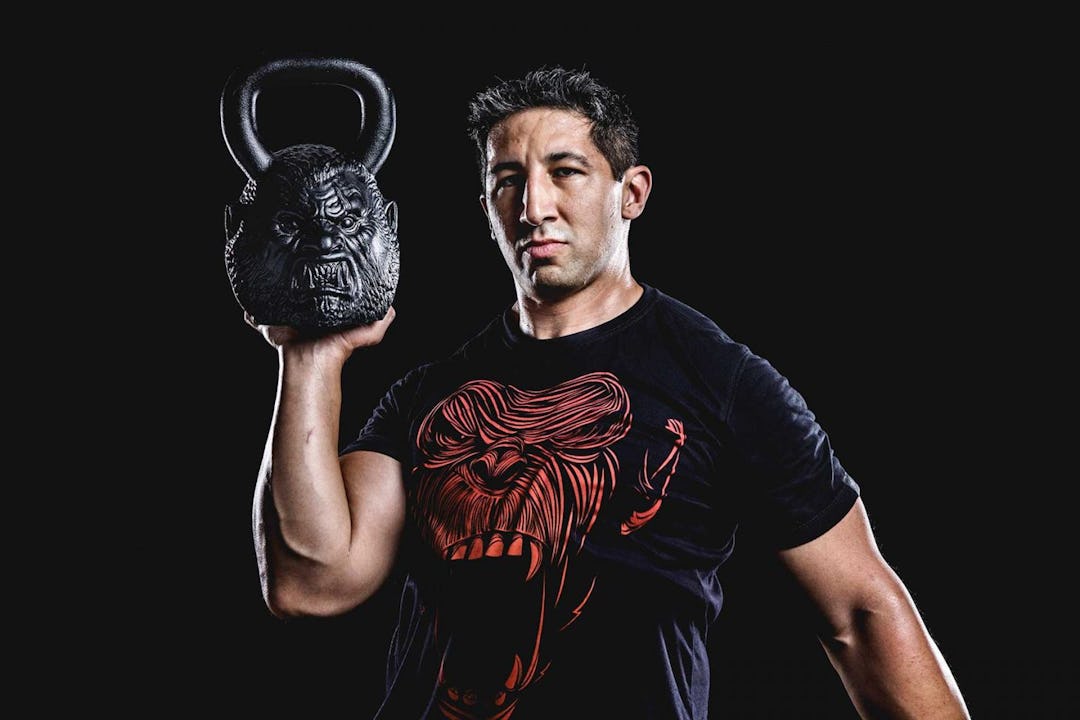
)
